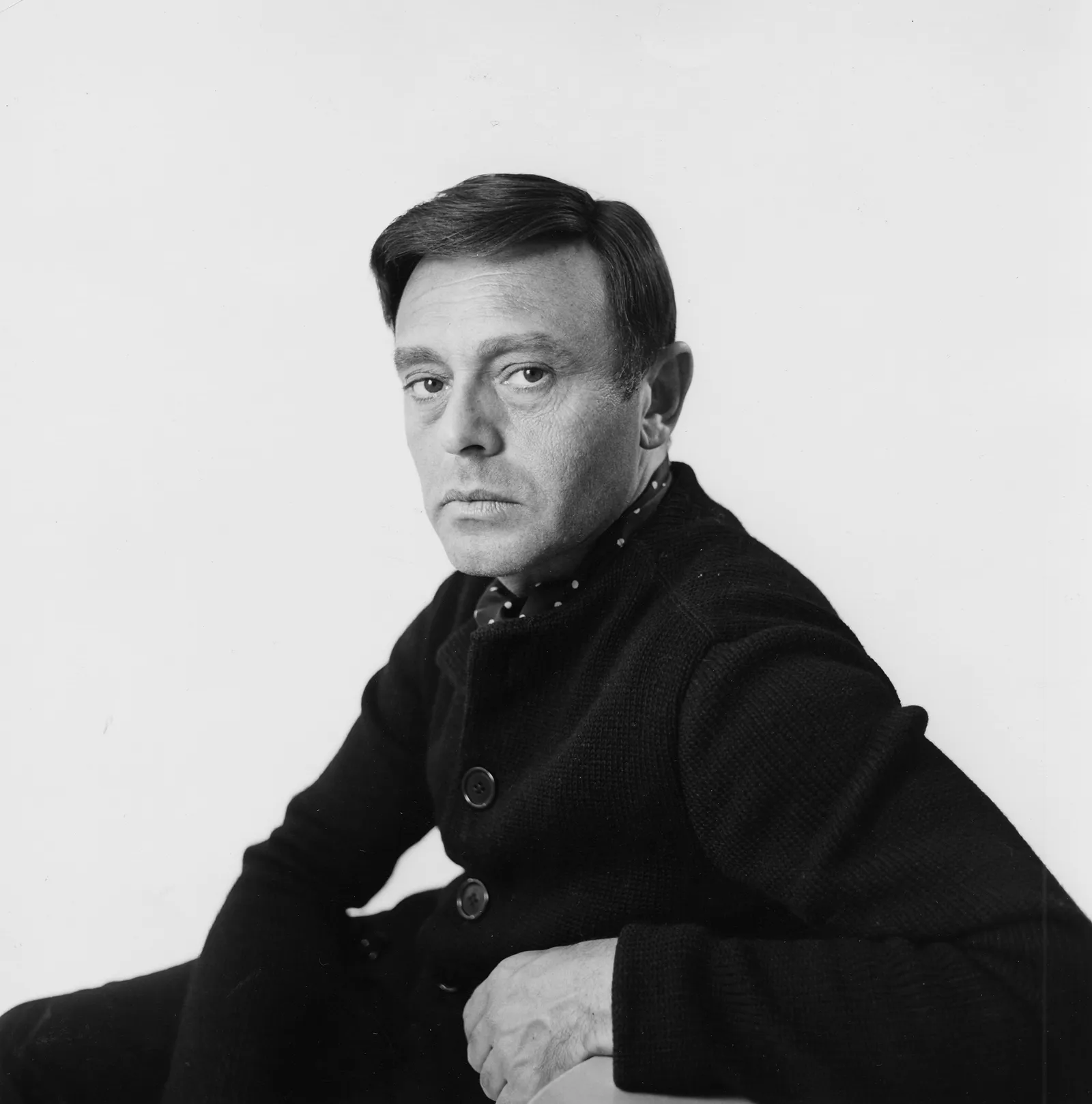Imagine a world where fashion is not just about pretty clothes, but a tool to challenge society’s rules. That’s the legacy of Rudi Gernreich, the designer who dared to break boundaries and spark conversations that made people think. From his scandalous monokini that exposed the female body to his designs that celebrated diversity, Gernreich’s work pushed the limits of what was considered acceptable and paved the way for a more inclusive and expressive fashion scene.
Unveiling the Genius of Rudi Gernreich
Rudi Gernreich wasn’t your average fashion designer. Born in Vienna in 1922, he seemed to have a knack for shaking things up. His early days around dance likely sparked his unique vision — he truly understood how the body moved, and you can see that influence in every piece he created.
By the time the 1950s rolled around, Gernreich was a breath of fresh air in the fashion world. Forget the rules, he was all about pushing boundaries. He truly believed in freedom of expression, especially when it came to bodies and sexuality. His designs were bold statements that turned heads and got people talking.
Remember the monokini? That jaw-dropping swimsuit that made waves in 1964? That was all Gernreich. It wasn’t just a swimsuit; it was a cultural phenomenon that quickly became a symbol of the sexual revolution.
But Gernreich’s creativity didn’t stop there. He seemed like a fountain of innovative ideas. He was one of the first designers to embrace unisex clothing, blurring the lines between what was considered “menswear” and “womenswear.” And yes, you can thank him for the thong! That daring little invention was his brainchild too.
Let’s not forget his “No Bra” bra – a statement piece that encouraged women to ditch the restrictive undergarments of the time and embrace their natural form. Gernreich’s designs were all about comfort, movement, and challenging traditional notions of beauty.
Gernreich was more than just a talented designer; he was an activist at heart. He passionately fought for LGBTQ+ rights and was a founding member of the Mattachine Society, one of the earliest groups dedicated to gay rights. His commitment to equality and self-expression shone brightly in his designs, which often challenged gender norms and celebrated individuality.
Even today, Gernreich’s legacy lives on, inspiring countless designers and reminding us that fashion can be a powerful tool for change. His fearless spirit and innovative designs continue to spark conversations and push boundaries, proving that true style is timeless.
The Enduring Impact of Rudi Gernreich
Rudi Gernreich wasn’t just a designer; he was a fashion revolutionary! This Austrian-American used his platform to challenge everything we thought we knew about clothes, beauty, and even gender roles. He was deeply inspired by what was happening in the world around him, particularly the social changes of the 1960s. Honestly, you couldn’t separate his designs from the spirit of the time – they were bold, daring, and all about breaking free.
Of course, you can’t talk about Gernreich without mentioning the monokini. This wasn’t just a swimsuit; it was a cultural explosion that became synonymous with the sexual revolution. But Gernreich’s influence went way beyond that one (admittedly iconic) piece. This was a man who dreamt of a world without rigid gender lines, and he expressed that through his designs. His unisex clothing was all about blurring those boundaries and asking, “Hey, why do we even have these rules?”
And then there’s the “No Bra” bra. This wasn’t about throwing bras away entirely. It was about women feeling empowered to embrace their natural selves, to decide for themselves how they wanted to dress and present themselves to the world. It was a statement, a pushback against the expectations and constraints that society placed on women’s bodies.
But it wasn’t just his social commentary that made Gernreich a fashion force. This guy was a true innovator. He experimented with materials you wouldn’t normally associate with clothing: think vinyl, plastic, even industrial fabrics. He took these unexpected elements and transformed them into fashion statements, redefining what was possible in the world of design.
Now, not everyone loved Gernreich’s daring vision. His designs sparked a lot of debate and even outrage in some circles. But controversy often follows those who dare to challenge the status quo. At the heart of it, Gernreich’s work was about celebrating individuality and freedom. He envisioned a world where people felt empowered to express themselves authentically, without judgment or limitations. And that’s something we can still get behind today.
Gernreich wasn’t content to just make waves in the fashion world. He was also a founding member of the Mattachine Society, a group that fought tirelessly for LGBTQ+ rights. He didn’t just talk the talk; he lived his values. You could see his commitment to social justice woven into the very fabric of his designs. They were a form of activism, a way to challenge the norm and advocate for a more inclusive and just society.
Even today, long after his time, Gernreich’s influence is undeniable. He continues to inspire designers to think outside the box, to use their craft to make powerful statements, and to never shy away from pushing boundaries. Gernreich reminds us that fashion can be so much more than just clothes; it can be a powerful tool for change, a reflection of our values, and a celebration of our truest selves.
Beyond the Monokini: Rudi Gernreich’s 1965 Revolution
Rudi Gernreich wasn’t afraid to shake things up in the fashion world. Back in 1965, he sent shockwaves through society with a single, daring garment: the monokini. Imagine a swimsuit… but topless. Yep, you read that right. This wasn’t just about swimwear; it was a full-on cultural explosion. The sixties were a time of massive change, and people were ready to break free from old rules and expectations. Gernreich’s monokini became a symbol of this sexual revolution, giving women a way to express their freedom and embrace their bodies on their own terms.
This wasn’t some random idea that popped into Gernreich’s head. His past experiences played a huge role in shaping his outlook. Some experts believe that having fled from anti-Semitism in pre-war Vienna, Gernreich carried a deep understanding of oppression and a desire for change. His time as a dancer further influenced his work, giving him an intimate understanding of how clothing interacts with the moving body.
By the time the 1960s rolled around, Gernreich was leading the charge in the avant-garde fashion movement. He wasn’t afraid to experiment – unisex clothing, see-through fabrics, even using unusual materials like vinyl. But the monokini was his most controversial creation. It sparked debates and made headlines, but it also resonated deeply with women who were tired of being told what to wear.
What’s fascinating about Gernreich is that he wasn’t just about shocking people. He truly believed in pushing the boundaries of what fashion could be and using it as a tool for social change. His designs went beyond just the monokini. He championed gender fluidity with his unisex designs and challenged beauty standards with his “No Bra” bra, encouraging everyone to express themselves authentically.
Even today, Gernreich’s impact on fashion is undeniable. He’s a reminder that clothes can be much more than just fabric – they can be statements, challenges, and celebrations of who we are.
Who Invented the Monokini?
Rudi Gernreich, that’s the name you’re looking for! He was an Austrian-American fashion designer who shook things up back in 1964 with his invention of the monokini. Now, Gernreich wasn’t your average designer. He was known for pushing boundaries and challenging the way people thought, especially when it came to societal norms. His creations often turned heads and sparked debates, but one thing’s for sure, they paved the way for people to express themselves more freely through fashion.
Think of it this way, he wasn’t just designing clothes; he was designing freedom. Gernreich believed in giving women the power to embrace their bodies and express themselves authentically, and his designs reflected that. Imagine bold colors, geometric patterns, and materials you wouldn’t expect, like vinyl and plastic – that was Gernreich’s style!
Then came the monokini in 1964. Picture this: a topless swimsuit, basically just the bottom part held up by straps. It was a world away from the conservative swimwear of the time and, as you might imagine, caused quite a stir. Some people were outraged, but others saw it as a breath of fresh air, a symbol of liberation and changing attitudes towards women’s bodies and sexuality.
What’s even more interesting is that Gernreich’s impact went beyond the monokini. He was a true pioneer, blurring the lines between men’s and women’s clothing with his unisex designs. Comfort and functionality were important to him, too. He believed clothes should move with you, not restrict you.
So, while the monokini might be his most well-known creation, remember that Gernreich’s legacy is about so much more than a single garment. He was a visionary who encouraged individuality, challenged conventions, and, most importantly, made people think differently about fashion and the messages it conveys. He showed the world that fashion could be a powerful tool for change.
Key Points about Rudi Gernreich:
- Born in Vienna in 1922, Gernreich was a dancer before becoming a fashion designer.
- Known for pushing boundaries and challenging traditional notions of fashion.
- Believed in freedom of expression and challenged gender norms and sexuality through his designs.
- Designed the iconic monokini in 1964, which became a symbol of the sexual revolution.
- Embraced unisex clothing and invented the thong.
- Created the “No Bra” bra to encourage women to embrace their natural form.
- Emphasized comfort, movement, and individualism in his designs.
- Activist for LGBTQ+ rights and founding member of the Mattachine Society.
- His legacy continues to inspire designers and promote fashion as a tool for social change.
Interested in other groundbreaking figures? Check out these articles:
- Lee Chim Yee is a talented and promising tennis player who has recently caught the attention of the tennis world. Despite being relatively new to the sport, Lee Chim Yee has already achieved impressive success and is touted to be a future star. If you’re looking for an exciting young talent to follow, be sure to check out Lee Chim Yee’s journey.
- Have you heard the latest rumors about Danny Koker’s health? The Counting Cars star has sparked concern among fans after he was spotted looking frail and unhealthy in recent public appearances. Sources close to Koker claim that he has been battling a serious illness, but the exact nature of his condition remains unknown. To find out more about Danny Koker’s illness and his current health status, click on the link.
- Jerry McSorley is a controversial figure in the world of sports. The former NFL player has been accused of domestic violence and other heinous crimes. Despite his checkered past, McSorley remains a popular figure among some fans, who believe that he has been unfairly targeted by the media. To learn more about Jerry McSorley’s troubled life and career, click the given link.
- Marigold Churchill is the fascinating pseudonym of a reclusive British writer. Little is known about Churchill’s personal life, but her work has garnered critical acclaim for its originality and beauty. If you’re a fan of enigmatic literature, be sure to check out the intriguing works of Marigold Churchill.
















